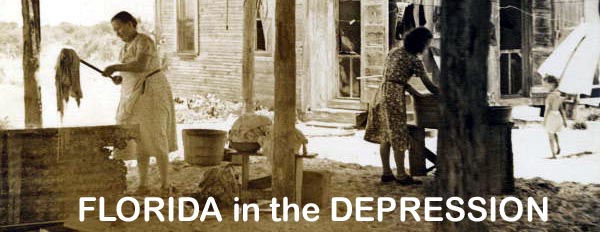
DARK YEARS OF DEPRESSION AND WAR
POLITICS IN THE DEPRESSION AND WW II: 1930-1945
THE STOCK MARKET CRASH AND FLORIDA
Floridians accepted the 1929
Stock Market Crash and the beginnings of the Depression with a little
more understanding than most of the nation. After all, Florida
had suffered its own economic collapse in 1926 and while Floridians were
gradually rebuilding their shattered economy during the John W. Martin
administration, they recognized the same foolish speculative factors that
ruined the Florida Land Boom was an established
part of business America.

Tampa lawyer Doyle E. Carlton was given the
dubious task of fighting the Depression in Florida while still continuing efforts to
restart the tourist economy. The industrious road building programs and
irrigation projects of the Martin period seemed in vain as people in the North
and Midwest canceled their Florida
vacations. Many of Florida's bailout taxes,
such as a huge seven cent tax on gasoline, hurt Florida in competing for the dollars of automobile
travelers.


As
unemployment rates rose and tourism decline from three to one million visitors
per year, Florida's
leaders searched desperately for solutions. There were no easy answers for the
business solutions of the 1920's fell on deaf ears.
In the gubernatorial election of 1932 voters showed there was change in the
environment as they rejected former governors Martin and Cary A. Hardee, and
selected relative unknown David Sholtz of Daytona Beach. Sholtz
emphasized a return to Florida's
basic industries to pull the state out of its economic doldrums. Money was
scarce and the tourist route was a poor solution. On the other hand Florida citrus and
agriculture showed good yields despite low farm prices. Phosphate and cattle
could not be hurt by a lack of visitors like banking and real estate.
THE NEW DEAL COMES TO FLORIDA
Floridians had backed Republican
Herbert Hoover in 1928 when his views on continued growth seemed more in
tune to the state rather than liberal, Catholic Al Smith, but in 1932, Florida
joined the rest of the South in supporting Franklin Delano Roosevelt and the Democrats. While business and
conservatives feared Roosevelt's reform plans,
most Floridians wanted reform and change. Florida banks were closing. Florida stock was declining
in value.
The New Deal programs forever changed the outlook many Floridians had toward the
role of the Federal Government in their lives. While rural Florida
needed farm supports and urban Florida needed
jobs, there was still great reluctance for the Federal Government to take over Florida institutions.
Local Democratic leaders sought ways to reap the benefits of Federal funding
without the stigma of Federal bureaucracy. The Roosevelt
administration was cleverly political enough to accommodate Southern
politicians to appease conservative constituencies.

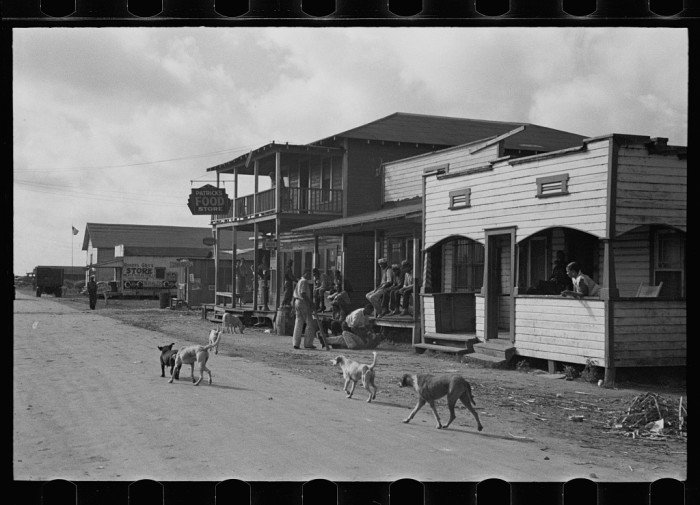 PHOTOGRAPHS from the United States Farm Security Administration (FSA-OWI) in Florida
PHOTOGRAPHS from the United States Farm Security Administration (FSA-OWI) in Florida
Roosevelt could
offset Southern opposition by placing Southern leaders on key Congressional
committees and supporting local laws. It was not until Roosevelt began
proposing minimum wage laws and better working conditions that Florida leaders
expressed open opposition to New Deal plans.
NEW DEAL IMPACT UPON FLORIDA
The New Deal had its biggest impact in states where high unemployment,
low wages, and poor working conditions were a fact of life. All three of those
elements were found in many areas of Florida.
TheAgricultural Adjustment Act provided a much needed
subsidy to many Panhandle farmers. The
National Recovery Act bolstered wages and protected the status of Florida's weak labor
unions. 
There were
plenty of road construction projects left over from the Land Bust for the Public Works Administration, the
largest being the development of a monstrous dirt dike around Lake Okeechobee
to prevent a future tidal wave in hurricanes and to control water flow. The
the enormity of this project can only be realized when one notes that the second
the largest lake found in just one state in this country can not be seen by the
highway due to this huge project.
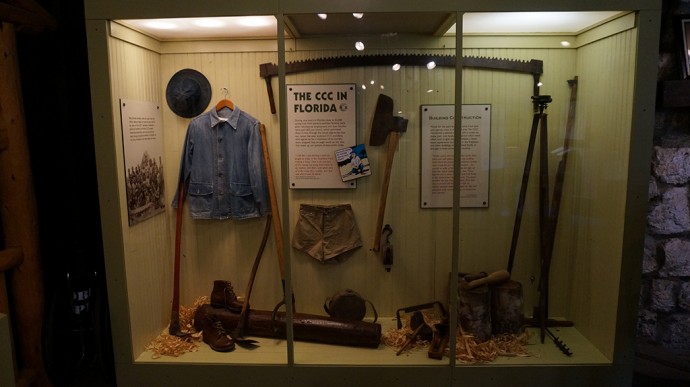
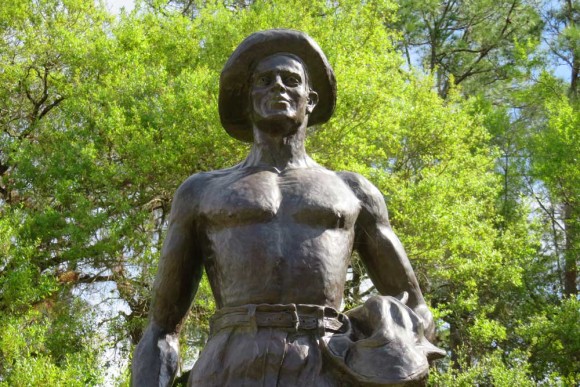
Southern
relief efforts were quite low. Relief payments in rural Florida were often less than seven dollars
per month per family. The Federal
Emergency Relief Administration pressured state officials to increase
payments. Florida's
business community did not support the New Deal's strong support for organized
labor and minorities. While hundreds of young Floridians joined the CCC (Civilian Conservation Corps) and went to the Carolinas to work in forests, thousands of people from outside Florida worked in Florida CCC projects. There is a CCC museum in Avon Park.
Roosevelt's
efforts to pack the Supreme Court to pass some of his programs did not gain the
approval of Florida
voters. The Bankhead-Jones Farm Tenant
Act in 1937 failed to provide the loan needs of Florida's tenant farmers. The Jeffersonian ideals of small farm ownership was a major obstacle in
convincing farmers to seek Federal help.
Florida was the last Southern state to enact
unemployment insurance measures in conformity with theSocial Security Act. Florida was already known as a retirement state,
but Florida's retiree population, while supportive of most of the New Deal, was
not well organized. Other Floridians feared the retirement requirements would
later burden the Sunshine
State with a huge retired
population that would discourage growth.
TURBULENT POLITICS
The question of civil liberties and liberal programs, coupled with the
serious economic problems in the 1930's, made Florida politics turbulent and quite often
violent. Socialist and other left-wing organizations emerged in Florida's large cities
and many rural areas to question the tenant system, the fee system for paying
police and judges, and the less than friendly poll tax. The efforts of the NAACP and the newly formed National Negro Congress to register
black voters and to end racial barriers were heavily resisted despite pressure
from Washington.

The 1930's
marked a slow but important turning point for African-Americans in Florida. The majority of
black Floridians were still engaged in agriculture, mostly as farm laborers,
but more and more rural Floridians of all races were moving to the urban areas.
A majority of black women worked as household or domestic servants. Yet, there
was hope that more jobs in construction and manufacturing would open up. African-Americans increased in number in such traditional city jobs
like longshoremen, stevedores, forestry, railroad transportation, and
craftsmen.
The black
middle class was strongest in larger cities where the community was large
enough to support restaurants, rooming houses, newspapers, funeral homes, and
shops. The shortest of white-collar professionals in law, medicine, science,
and engineering meant a lack of investment money for black business projects.
Florida A&M, started in October of 1887, was the only black
public university. The other colleges like Bethune-Cookman
were private. There was Edward Waters College
(1883), operated by the African Methodist Episcopal Church, and Florida Memorial (1879),
run by the Southern Black Baptists.



While
education ranked only behind the church as the pillar of most black
communities, black teachers were paid in 1930 about 40% less than their white
counterparts. Black teachers also faced larger teacher loads,
lack of educational equipment, and overcrowded buildings.
Despite
the rise of the Ku Klux Klan in many parts of Florida, African-Americans openly recruited
Federal help in their economic and politics needs. Roosevelt's chief
educational advisor Mary McLeod Bethune
worked to improve Florida's
backward public schools. She had gained national attention in 1923 when she
merged her all-female Daytona Literary and Industrial
Training School with the all-male Cookman Institute of Jacksonville.
Despite great odds, she developed a strong college. She emerged as Florida's greatest
promoter of minority higher education.
Left wing
groups found Florida
more than unsympathetic. Three socialists who set up a chapter of the labor
backed Modern Democratic Party were attacked, flogged, and tar and feathered in
Tampa.
Communist Presidential candidate Earl Browder was padlocked out of meeting
halls in Tampa and St. Petersburg. Opposition to labor union
activism curtailed the efforts of the
CIO to organize Florida
factory workers.
The
gradual acceptance of labor unions in Florida
improved as the Roosevelt administration
encouraged union participation in Federal projects and other economic issues
replaced the issue of unionism. The Democratic Party gained the black and labor
vote in Florida
during the Depression.
FLORIDA
AND ISOLATIONISM
Although most Americans were supporters of continued isolationism in
world affairs and avoidance with the failing League of
Nations, many Floridians had an internationalist attitude to world
issues. Florida engaged in trade in phosphate
and agricultural products with Europe. The
state's close location to the Caribbean and many investments, particularly in Cuba and Puerto Rico, made foreign issues
important Florida
had been early supporters of American participation in World War I.
As the
political and diplomatic situation deteriorated with the emergence of
militaristic dictatorships in Italy,
Germany, and Japan, Florida's
political leaders were openly critical of the failure to curtail world
aggression. Florida backed Roosevelt's Lend
Lease plan when most of West and Midwest
opposed it.
FLORIDA
HEADS TOWARD WAR
The airplane played a major role in Florida's status in World War II. Florida's flat terrain, abundance of water, and
sunshine made Florida
a logical place to fly test planes. Even Orville and Wilbur Wright flew planes
in Florida between fishing trips to their
vacation retreat at Aripeka, Florida.
Pensacola Bay
and the St. Johns River were early test sites
for naval aviation. 
Tony Jannus set up the first commercial airplane
service between Tampa and St. Petersburg in 1914. St. Petersburg Mayor
A. C. Pheil was the first commercial passenger.
During World War I, the old Pensacola
Naval Yard, with its landlocked harbor, was the first combat training field.
Within one year, Florida trained pilots were
flying over Mexico
in a futile search for Pancho Villa. By 1920Aeromarine Airways built the first
international airline, by flying between Key West
and Havana.
Although military bases closed in 1920, rumrunners filled the skies in the
1920's.
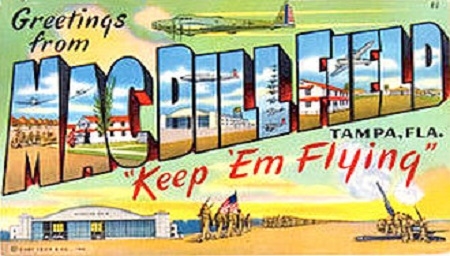
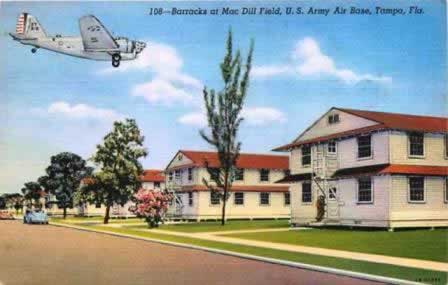
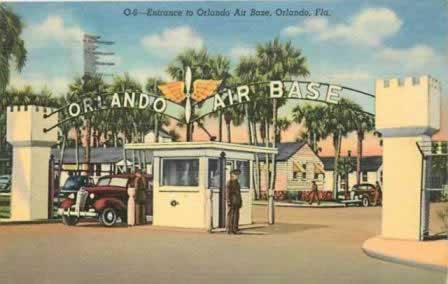
Later Pan-American and Eastern Airlines started successful
international airlines using Florida
as their first base. Aviation remained a successful industry in Florida despite the
decline of tourism. In 1937 Amelia Earhart began her round-the-world flight into
oblivion from Miami

With the
start of World War II, Florida
emerged as a key training center. The
Army Air Corps utilized 70,000 hotel rooms in Florida
with Miami Beach
turning into a ninety day work station. The Army Air Corps utilized Drew and MacDill
Airfield in Tampa, Eglin at Fort
Walton Beach, Dale Mabry in Tallahassee,
and Orlando Field as featured bases.
The Navy increased Pensacola
Naval Station and added Banana River in Eau Gallie, Cecil
Field and Mayport in Jacksonville,
Camp Blanding
in Starke and Key West.
The British Royal Air Force
moved into Arcadia and the University of Miami.
WACS were trained at Daytona Beach. Later German prisoners were held in Miami, Clewiston, Leesburg, and Venice. A majority of American pilots had
some contact with Florida's
booming war industry.
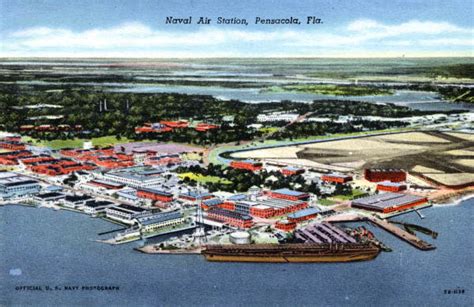
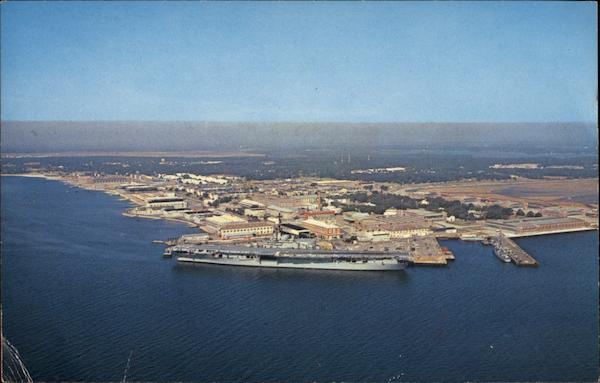
WORLD WAR II IN FLORIDA


CHANGING FLORIDA
World War II ended the Depression. Unemployment was no longer a problem
in Florida as
the state turned to the war effort. Many of the programs greatly disliked by Florida political
leaders were terminated as the problems of the Depression faded.
Liberal
Senator Claude Pepper and
conservative Attorney General Tom
Wilson were both reelected by a Florida
electoral that seemed willing to exclude political labels and decide the fate
of politicians on an individual basis. As newcomers poured into Florida during the 1940's, the political record of
earlier Governors like Carlton (1936), Sholtz (1938), and Cone (1940) meant little in Florida's changing
political climate. Florida's politicians were again captured, like in the
1920's, with a booming population and the need to provide facilities for this
growth.

![]()




![]()





![]()
![]()



![]()


![]()
![]()